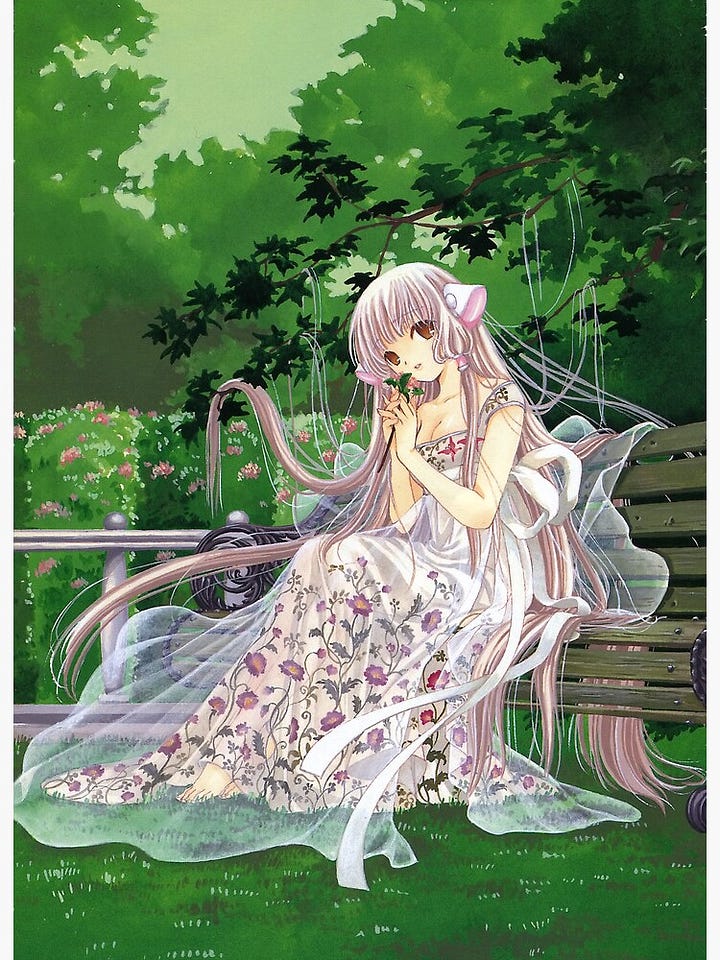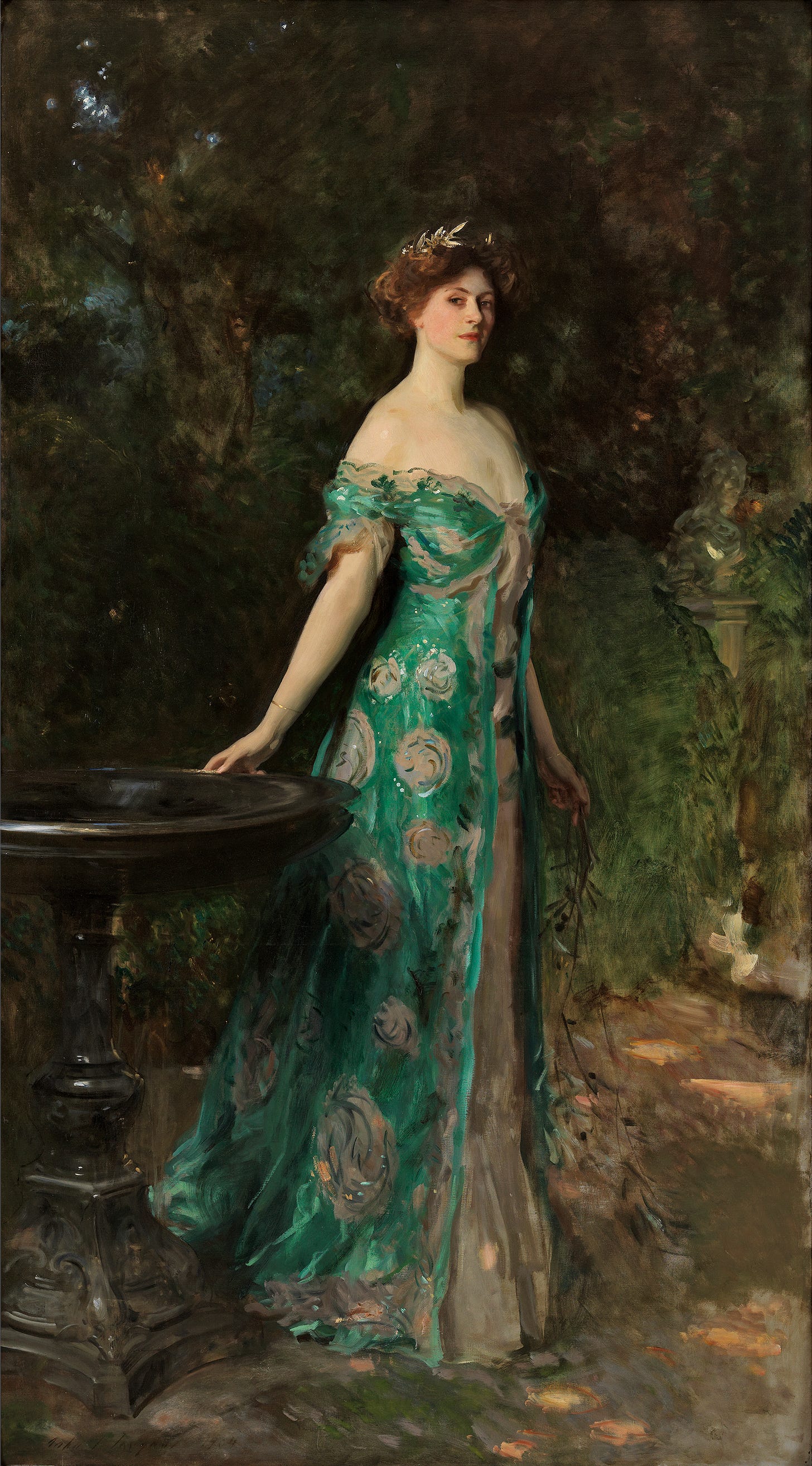what i talk about when i talk about clothing
opening the pandora's box of fashion
I was fourteen when I finally decided to give a shit about what I wore.
After years of running around in ill-fitting tees and stained cargo shorts, I decided – I wanted to look cute! I wanted to look like a character out of the shoujo manga I obsessively read as a child.


Watching the girls around me stack camis on top of one another like a layer cake, I decided to go out and buy a tank top.
A classmate commented on my bare shoulders. I did my best to ignore it.
Many comments and sixteen years later, I have arrived at a style and wardrobe I’m largely satisfied with. My philosophy on fashion and views on the industry have shifted significantly over time, but I continue to love the stories behind the garment. It’s honestly one of the reasons why I was drawn to Substack in the first place. There was a place where writers who loved fashion wrote about fashion in meaningful ways.
I started this newsletter partly because I wanted to write about what makes me happy, which includes fashion. When I first started buying clothes, I remember what all these firsts (combat boots! mini skirt!! skinny jeans!!!) looked like with such clarity. I remember how they felt on me and how I felt in them. Buying clothing out of pure desire rather than necessity was precious, a moment so emotionally charged it deserved to be carved in stone.
For my middle school graduation dance, I wore a white knee-length dress with large blue flowers splayed across the front in watercolor. It was the first dress I ever bought of my own accord, the product of strolling into a Forever 21 after hours of scrolling their product pages. Surely a dress that pretty would look pretty even on me?
Oh God, I lamented as I tried the dress on again at home. The shirred waist and flared skirt looked adorable on the rack, but wrapped around my waist and hung off my hips to form a distressingly alien silhouette. The neckline plunged far deeper than anything I had ever worn before. Did I mess up? But I didn’t have anything else to wear, so I decided to roll with it.
Greeted with a smile from my crush at the dance, I relaxed. As I hung out with my friends and tromped along the school grounds, skirt swishing between my knees, I started to feel pretty. More bizarrely, I felt confident.
It was then I learned that fashion could be so many things:
A suit of armor you don to face a bad day.
A costume if you wished to play a persona.
A space to discover parts of yourself you never realized existed.
A fantasy where you can play out your deepest longings.
I believe the pursuit of style to be noble. Who can ever begrudge you for seizing the courage to express yourself? To develop style is to develop an awareness of signifiers, then choose what is so significant that you willingly drape it over your body.

But fashion can be frustrating. It makes you wrestle with the fact that something you love is to the detriment of others.
Think pieces and Reddit threads will tell you that ethical consumption is impossible in a late-stage capitalist society where global economies are so intertwined that they’re nearly inextricable. For every influencer showing off their Shein haul, there’s a factory owner flouting labor laws and paying their workers pennies to complete ridiculous quotas in punishing conditions. Not to mention that the fashion industry is responsible for 2-8% of total global carbon emissions with a potential to reach 25% by 2050 if left unchecked.
With all this in mind, is there any hope or pleasure to be found in coveting clothing and listening to the lizard overlord in your brain?!
An individual’s impact is minuscule compared to what the system promulgates (hooray for systemic issues /s), and the reality is we are all bombarded by crappy clothes from all directions. Even luxury labels that we aspire to afford one day are not much better than their fast fashion counterparts; they still treat employees poorly, churn out tired designs, and destroy excess inventory to preserve brand value.
Good quality clothes are out there but require more knowledge, patience, luck, and time to source. And when you discover a brand that fits the holy trifecta of cute, fits well, and ethically and sustainably produced, your heart leaps with joy until you spot the prices. Eyes watering, you reason that you’re paying for better materials, fair compensation, and a future where small, independent labels can continue to thrive. But the pressure to enjoy that item increases tenfold, and you hope, hope, hope that you didn’t squander precious resources on a bad decision.
“Did you buy anything lately?” my sister asked while we were on the phone.
“Just some long sleeves from Uniqlo. I wanted warmer options for running outside. And some pants because they were on sale.”
“But anything fashion-y?”
“Not really,” I responded. “It’s been an expensive year, with all the travel.”
“But is there anything you’re lusting after?”
Yes. Oh, yes. Always.
Fashion can be frustrating because it’s full of tradeoffs, both practical and philosophical. It forces me to confront my own hypocrisy. I sometimes find myself championing one point of view, like buying more secondhand, just to turn around and snag a deal too good to resist.
Should we consider how we participate in fashion with more nuance? Sure. But for most people, it’s like opening Pandora’s Box – they realize fashion is not a superficial hobby but a highly intricate and personal art form with massive (and oftentimes negative) repercussions for society, the global economy, politics, and culture.
Yet, fashion sparks something inside. It allows people to communicate what cannot be put into words, pay homage to their inspirations, and connect to their identity in an uncommonly tactile and intimate manner.

Sometimes, sifting through my closet, my hands land on a specific piece that gives me pause. I start wondering. What sorts of shapes can I manipulate the fabric into? Is there a way to push the envelope on how I wear it? What attracted me to it in the first place? Did I buy it because it sparked something inside me or because I wanted to play a certain part? If it’s a secondhand piece, then who was the previous owner? What sort of life did they live? Is it similar to mine? How can I breathe new life into this garment?
I want to answer these questions and share the stories of my closet. I want to share my perspective as someone who willingly partakes in the fantasy and glamour fashion has to offer, but also wants to appreciate the effort behind each thread as much as possible. As far as perspectives go, what I have to offer is a long-winded journey of bumbling my way into my style, some years working at a major apparel company, experience in knitting, sewing, and lacemaking, and an amateur’s relentless enthusiasm for the history of fashion, vintage, and fiber arts.
Fashion can be frustrating, but I still find myself caring about it. I don’t think I will ever be able to stop.



loved this! never been much into fashion myself because as a child i thought that wasn’t something for me, but growing up i began to get more and more interested in it. loved how you also talked about the difficulty to be sustainable in a capitalist world
I really enjoyed reading this—I had a very similar experience of deciding I wanted to understand fashion and dress better, and ended up falling in love with fashion as an art form and industry and community of writers. But it’s a complicated love, as you point out!—it’s often expensive and environmentally damaging. But it’s very hard to let go of the very pure joy I experience when seeing beautiful clothes and putting together an outfit. Thanks for this lovely read 💌